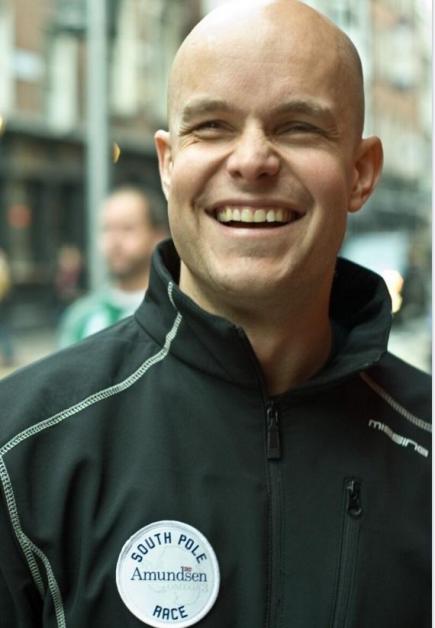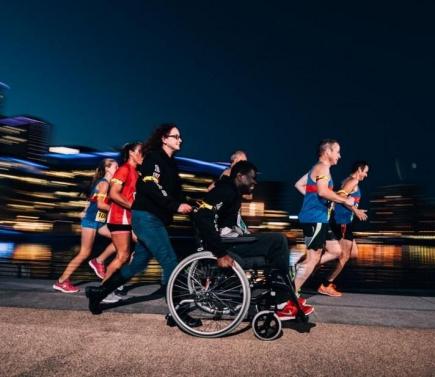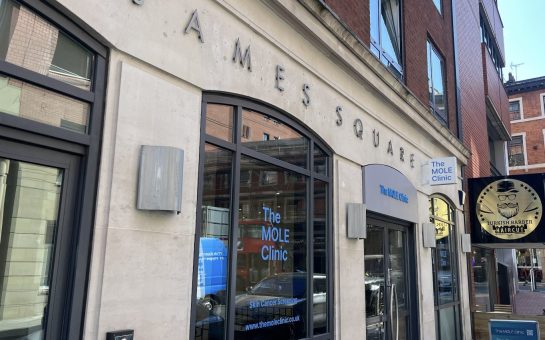Manchester has been labelled as a hub of charity-based activity by the organiser of global phenomenon Run in the Dark.
The night-time run, which is being held on November 11 in five official hubs in the UK and 45 pop-up locations worldwide, is held in aid of the Mark Pollock Trust, which aims to fast-track a cure for paralysis.
Pollock, who overcame sudden blindness at 22 to take on endurance tests including a trek to the South Pole, was left paralysed by a tragic fall five years ago.
The event, which began in 2012, will see 25,000 runners across the world take to the streets to raise money for the Trust.
And the 39-year-old from County Down admitted that he has been taken by surprise by the level of interest in Manchester, which sits alongside Cork, Belfast, Dublin and London as one of the five main Run in the Dark hubs.
“It would be easy to say five years on that the scope of the event was part of our design, but it actually emerged in the aftermath of my injury.
“There was a great desire to help from lots of different people, and when the Irish and the UK locations were set up, it excluded those people who were living in Sydney or Singapore or America.
“The idea of the pop-ups emerged from them, and it has snowballed to 45 around the world to complement the five official events, and they’re getting bigger and more formal over time.
“Manchester is an unusual one, the Greater Manchester area is bigger than Ireland, so we’re convinced that Manchester can grow into one of our key events.
“Once you get to over 1500 runners, it starts to create a bit of a life of its own, and then it starts to grow and grow, and that’s what we’re aiming for over the next year or two.”

AIMING HIGH: Mark Pollock, left paralysed by a tragic fall five years ago, hopes in the next year or two Run in the Dark will grow beyond all recognition
Pollock’s awe-inspiring list of achievements includes two Commonwealth Rowing Championship medals, as well as multiple ultra-endurance races in landscapes from the Gobi Desert to the South Pole.
Now, however, he faces a different test.
By undergoing a programme described as ‘aggressive physical therapy’, Pollock, with the use of a robotic exoskeleton, challenges the conventional wisdom that says his central nervous system cannot recover.
“In the initial phase after my accident, the foundation was to see what nerve connections are still intact, and keep my body in reasonable shape to be ready for anything that might come down the line.
“I was standing in a squat rack with the help of my trainer, crawling, standing, and also on the physio table trying to move my legs with my trainer, but that really served as a foundation for what we’re now doing with the study.
“The robot allows me to stand up and walk, but the interesting piece is the drug combined with the electrical stimulation, which excites my nervous system to the point that when I’m doing the walking with the robot then I’m actually starting to make real connections with the nervous system.”
Amongst such a plethora of charity runs, Pollock believes that the Run in the Dark stands out for several reasons, not least the night-time aspect.
The race has caught the eye of a wide range of people, from 16-year-olds running 10k for the first time to those, like Pollock, used to running far and wide.
“Often the emotional connection after spinal cord injury is short-lived, and other people have accidents.
“We figured we were going to have to create something that didn’t demand massive unusual donations from people, rather they could pay a reasonable price for something that they would enjoy.

GREAT DESIRE: 25,000 athletes across the world will run to raise money for the three-year-old Trust
“They get something out of it, and we can benefit from the money made, by building something that is sustainable and growing over the longer term.
“With Run in the Dark, the money we’re raising is now being spent on not only the original thing, which is to help the cause of my spinal injury, but also to fund research scientists to help fast-track a cure for paralysis.”
Image courtesy of Mark Pollock via YouTube, with thanks.



